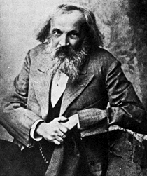What are the properties of gases? How many properties does a gas share? Why are gases compressibility and expandability similar? In this experiment you will investigate some of the properties of gases , how gases flow , i. A range of interactive and print-out practical activities provided by the Association for Science Education to help children understand the properties of solids, liquids and gases and the changes that take place when materials are heated Information is provided through cartoons, downloadable worksheets and ideas for experiments under the following topic headings: SolidsLiquidsChanging solids into liquids and back againDissolving and not dissolvingGasesSolids, liquids and gasesSolid to liquid.

The most remarkable property of gases , however, is that to a very good approximation, they all behave the same way in response to changes in temperature and pressure, expanding or contracting by predictable amounts. Sound propagating in a two-dimensional Fermi gas. The image shows the density of the gas in time, shortly after a sound wave has been excited. Dark red values correspond to a high density, lighter.
The First Activity Relates Pressure And Volume. Because particles are less ordered than in liquids or solids, the gas form of the same substance occupies much more space. Baking Soda-Powered Boat Science Experiment (Ages 7-16) By mixing baking soda and vinegar, you get a chemical reaction which creates carbon dioxide gas. When this happens inside the bottle boat, the gas only has one way to escape, and that’s out the straw. The gas flying down the straw and out the back pushes the boat forwards.
Four properties of gases will be investigated: pressure, volume, temperature, and number of molecules. By assembling the equipment, conducting the appropriate tests, and analyzing your data and observations, you will be able to describe the gas laws, both qualitatively and mathematically. In this activity, a diagnostic task and a series of small experiments illustrate to the students key points about gases and their properties. Learning objectives. Read the entire experiment and organize time, materials, and work space before beginning.
Remember to review the safety sections and wear goggles when appropriate. Objectives: To investigate some physical and chemical properties of gases , and. To use these properties to identify these gases whenever they are.
Experiment : States of Matter in a Jar Give your kids water in a plastic bag or other clear container for the them to observe. Let them pour the water into a different container and describe how. A gas has three intrinsic properties , pressure, temperature, and volume. These three properties are linked to each other and can be explained using kinetic theory.
Pressure is caused by particles hitting the wall of the gas container. Indefinite Shape or Volume. The random movement of gas molecules allows them to. Compressibility and.

It is vital for appreciating the limitations of the scientific model that constitutes the ideal gas. KSScience Solids, liquids and gases learning resources for adults, children, parents and teachers. Solids, liquids and gases The particle theory is used to explain the properties of solids, liquids and gases.
Gases have no definite shape or volume. The strength of bonds (attractive forces) between particles is different in all three.
No comments:
Post a Comment
Note: only a member of this blog may post a comment.